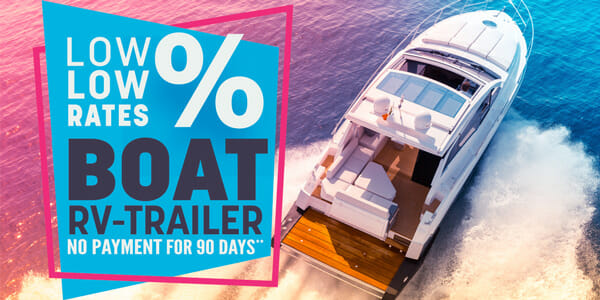Purchasing a boat is a dream for many, but like any major investment, it often requires financing. As a result, understanding boat loan rates becomes essential for making a sound financial decision. Whether you’re eyeing a sleek speedboat, a family-friendly pontoon, or a luxury yacht, the interest rate on your loan can significantly affect your total cost over time. It’s not just about getting approved—it’s about securing the best possible terms for your lifestyle and budget.

Boat loan rates vary based on several factors, including the borrower’s credit score, the type of boat being financed, and the loan term. Much like auto loans, lenders assess risk and assign interest rates accordingly. Those with excellent credit histories tend to receive the lowest boat loan rates, while those with lower credit scores may face higher rates or additional conditions. It’s important to shop around and compare offers to understand how your credit profile can influence the rates available to you.
Another key element that impacts boat loan rates is the size and age of the vessel. New boats typically qualify for lower rates compared to used ones, largely due to the lower risk of mechanical issues and better resale value. In contrast, older boats may come with higher interest rates or require shorter loan terms. Knowing this can help buyers make more informed choices when balancing price with long-term financing.
Loan duration also plays a significant role in determining boat loan rates. While longer loan terms can lower your monthly payments, they usually come with slightly higher interest rates. For example, a 5-year loan may offer a more favorable rate than a 15-year loan, though your monthly payments will be higher. Weighing the trade-offs between a lower rate and manageable monthly payments is key to aligning your loan structure with your financial goals.
Lenders offering boat financing can include banks, credit unions, and marine lending specialists. Each of these may offer different boat loan rates based on their underwriting criteria and risk assessments. Marine-specific lenders often provide competitive rates and understand the nuances of boat ownership better than traditional banks. It’s worth investigating various types of institutions to find the lender best suited to your needs.
Down payments also influence the boat loan rates a buyer may receive. A larger down payment can reduce the lender’s risk, which can result in a lower interest rate. Putting more money down upfront not only decreases your total loan amount but also demonstrates financial responsibility to the lender. For those seeking the best possible boat loan rates, saving for a sizable down payment can be a smart strategy.
Your debt-to-income ratio is another factor lenders consider when determining boat loan rates. This metric compares your monthly debt payments to your gross monthly income, giving lenders a sense of how comfortably you can handle new debt. A lower ratio signals better financial health, often leading to more favorable loan terms. Being mindful of your debt obligations before applying can improve your chances of locking in lower boat loan rates.
The timing of your loan can also affect the boat loan rates you’re offered. Economic conditions such as inflation, interest rate hikes by the Federal Reserve, or changes in the lending market can all influence what rates are available. When rates are generally low, it’s an opportune time to finance a boat. Keeping an eye on economic trends and acting strategically can make a big difference in the long-term cost of your loan.
Many boat buyers also consider fixed vs. variable interest rates when reviewing boat loan rates. Fixed rates offer stability and predictability, locking in the same rate for the duration of the loan. Variable rates, on the other hand, can change over time depending on market conditions. While variable rates may start lower, they carry a level of risk if interest rates rise. Understanding these options helps ensure your financing plan aligns with your risk tolerance.
Pre-approval is another useful step when navigating boat loan rates. Getting pre-approved not only gives you an idea of how much you can afford but also locks in a tentative rate. This can be particularly helpful in a competitive market where quick decision-making is important. Pre-approval also demonstrates to sellers that you’re a serious buyer, which can be an advantage during negotiations.
Refinancing is a lesser-known strategy that can help boat owners improve their boat loan rates over time. If your credit score has improved or market rates have dropped since you first financed your boat, refinancing could lower your monthly payments or reduce your overall interest cost. However, it’s essential to factor in any fees or penalties associated with refinancing to ensure it makes financial sense.
Finally, education and preparation are key to navigating the world of boat loan rates. Prospective buyers should take the time to understand all elements of financing, from APR and loan terms to lender requirements and insurance considerations. With the right information and approach, you can find a financing option that turns your dream of boat ownership into a rewarding, affordable reality.
In summary, boat loan rates are influenced by a complex mix of personal financial factors and broader market conditions. By doing thorough research, improving your credit profile, and comparing multiple lenders, you can position yourself for the best possible deal. Whether you’re buying your first boat or upgrading to a larger vessel, understanding and securing favorable boat loan rates is a crucial step in making your nautical dreams come true.
